5 Things in Your Garden That Are Poisonous to Your Dog
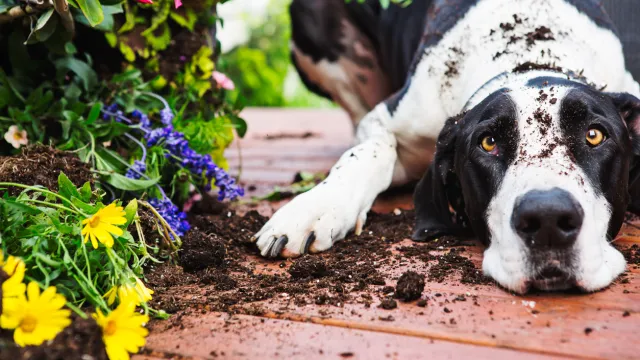
Much like their owners, many dogs love to be able to spend time outdoors enjoying the freedom of the yard. But while exercise and fresh air are perfectly healthy for them, there are still things that could be toxic or dangerous for your pet lying around your property. Before you bring your pup along with you as a weeding or planting companion, there are a few safety hazards experts say you should be aware of first. Read on for five things in your garden that are poisonous to your dog.
RELATED: Dog-Killing Parasite Is Spreading in the U.S.—Watch for These Symptoms.
1
Specific spring flowers and flowering shrubs

Arguably, one of the best times to spend time in your garden is springtime. You may want to attend to some chores ahead of the warmer weather, and it’s also when some of the most beloved early-blooming flowers spring to life. However, the same colorful plants you look forward to welcoming each year are also potentially dangerous for dogs.
“Daffodils and tulips may be popular early spring flowers, but they also contain a poisonous alkaloid that induces vomiting, low blood pressure, and convulsions in pets,” warns AJ Arapovic, dog expert and CEO at Showsight Magazine. “The bulbs have highly toxic crystals that can lead to cardiac arrhythmias or respiratory depression. Symptoms typically manifest between 15 minutes to one day after ingesting.”
The risk also doesn’t disappear after spring. According to Lorraine Rhoads, director of health and safety at Dogtopia, hydrangea bushes can pose a problem all season long.
“These beautiful flowers have a hidden, deadly toxin called cyanogenic glycoside,” she tells Best Life. “If a dog chews on this plant, he may get a mouthful of cyanide. All the parts of the plant contain this toxin, including the leaves, buds, and flowers, which would cause vomiting, diarrhea, and lethargy.”
RELATED: The Dog Breeds Most Likely to Get Cancer, New Study Finds.
2
Insecticides and herbicides
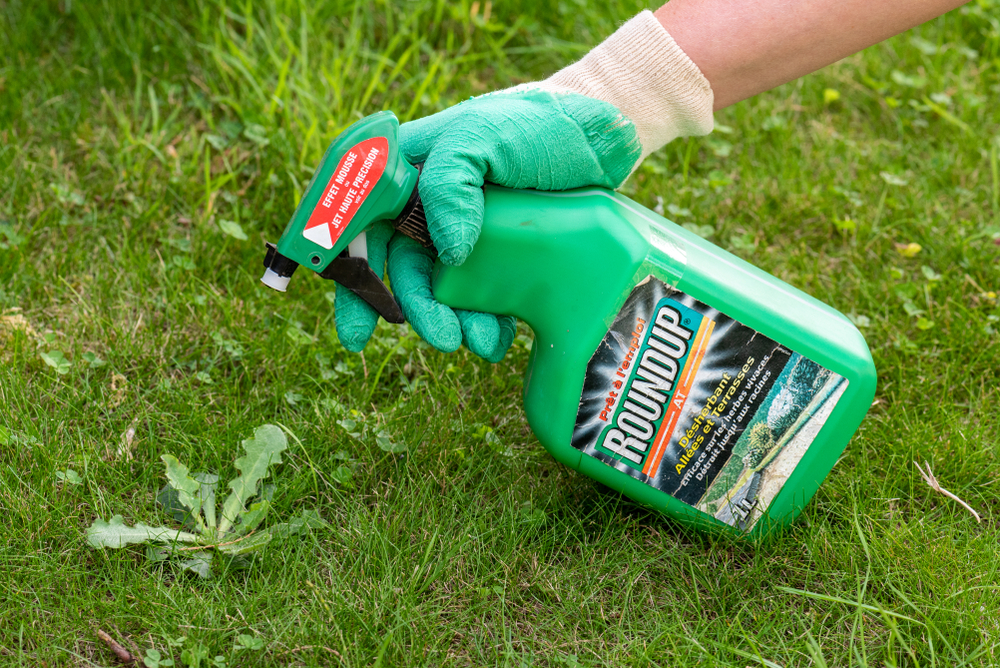
Garden upkeep involves ensuring no pests or other unwanted guests make their way in and wreak havoc. Unfortunately, spraying for bugs could also be putting your pet at risk.
“Insecticides, especially organophosphates, are a common cause of dog poisonings,” says U.K.-based veterinarian Joanna Woodnutt, MRCVS. “Dogs can become poisoned just by walking over areas that have recently had insecticide applied and then licking their paws.”
The same thing can be said for herbicides that are commonly used in yards and gardens.
“There are many products that people use to control weeds that can be quite dangerous to animals,” says Rhoads. “Read the label very carefully, follow the directions, and keep all pets and children away from these harmful chemicals.”
3
Snail or slug bait
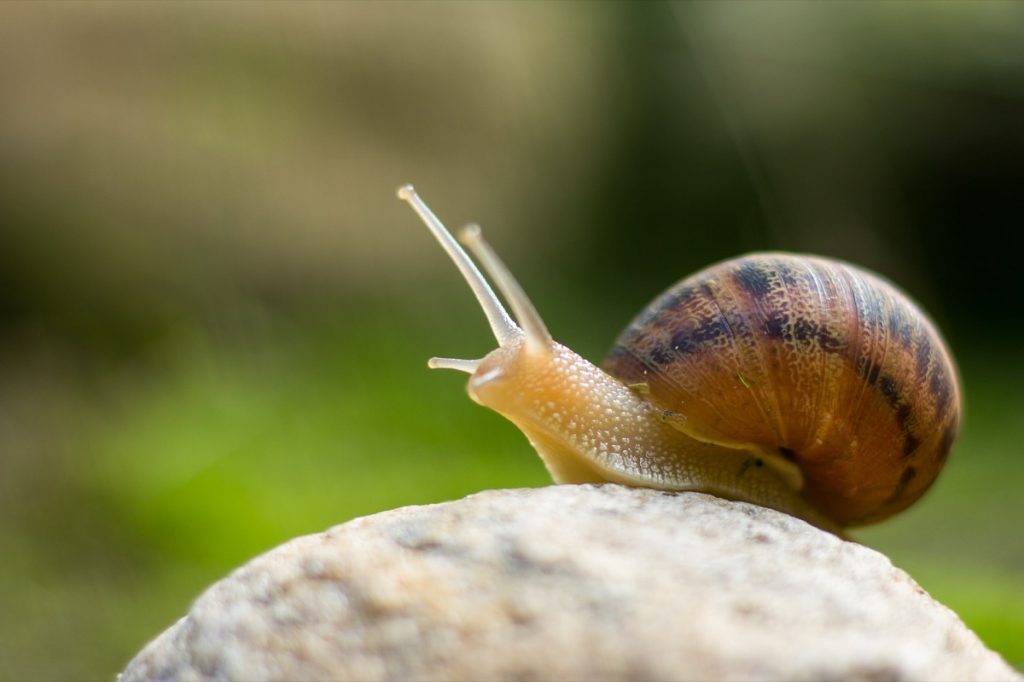
Keeping invertebrates including snails and slugs out of your well-kept garden can be hard work. But if you’re using any products to try and trap them, beware that they’re some of the most dangerous products out there for your canine to get into.
“Even the smallest amount of the chemical used to bait these shelled critters can be lethal to dogs,” warns Rhoads. “Symptoms include vomiting, diarrhea, tremors, seizures, elevated body temperature, and potentially fatal respiratory and heart problems.”
RELATED: Cesar Millan Says You Should Never Walk Behind Your Dog—Here’s Why.
4
Venomous snakes and poisonous toads
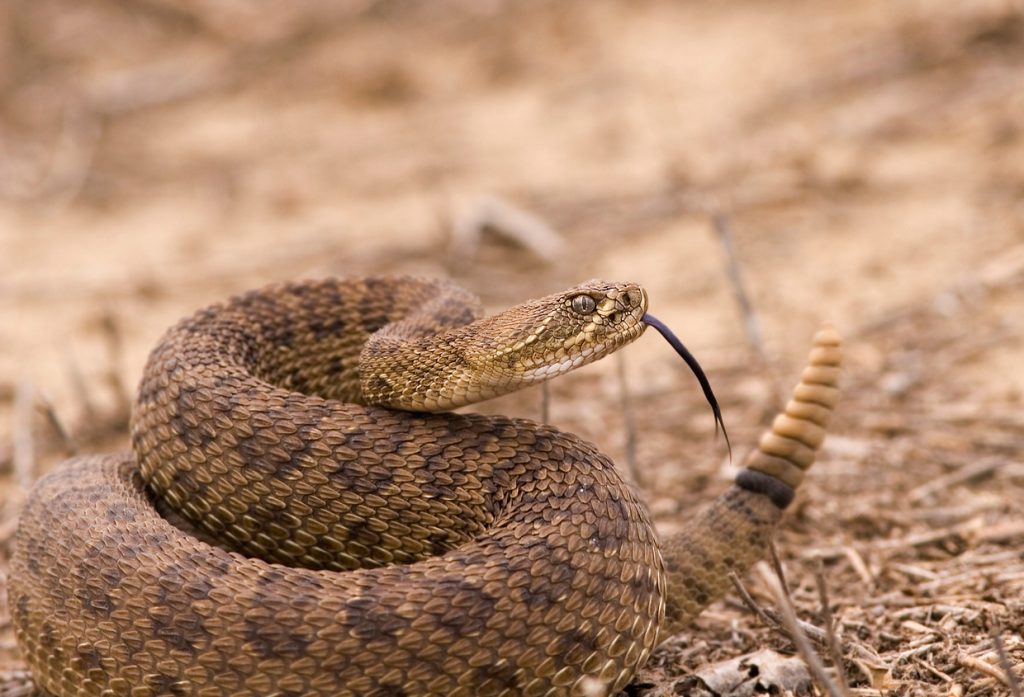
Humans know they should take extra care to beware of any copperheads, rattlesnakes, or other venomous reptiles in their area whenever they spend time outdoors. However, a curious canine might not understand what kind of danger it’s in by chasing or investigating one that might have slithered its way into your garden
“Nearly every state has a venomous snake species as part of the natural habitat. They often get a bad reputation, but snakes do an important job of holding down the rodent population in many areas,” explains Rhoads.
She adds that snakes can often be found under rocks, in wood piles, in trees, or under bushes in your yard. “If you have snakes in your area, do a quick check before letting your dog out to play,” she suggests.
Even if your pet can avoid being bitten, there are other animals that could pose a potential problem. This is especially true if your pup is keen on hunting amphibians that might be hopping about.
“Ingestion of toads in your garden can cause toad poisoning in your pets, resulting in gastrointestinal upset, hypersalivation, and in rare cases, neurologic and cardiac symptoms,” says Jaclyn M. Coble, DVM, a veterinarian and founder of Sea Legs Integrative Veterinary Health. “Toxic toad species include the Giant Toad and the Colorado River Toad.”
5
Fertilizers
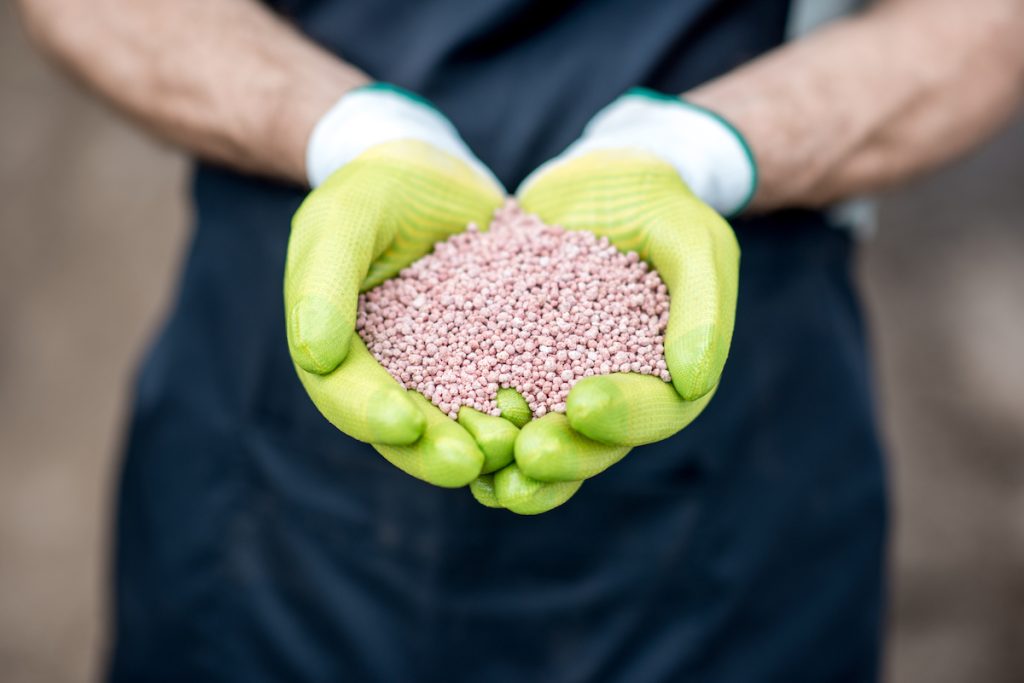
Even the greatest green thumb can sometimes use a little help getting their garden to grow. But if you’re treating your garden with fertilizer, it could be creating a health risk for your dog—even if you’re being careful.
Woodnutt explains that different fertilizers contain potash, nitrogen, and phosphorus as the main ingredients, with varying levels of micronutrients such as iron and manganese. “If eaten or licked off paws, this can cause mild gastric upset or poisoning from the excessive micronutrients—especially iron,” she cautions.